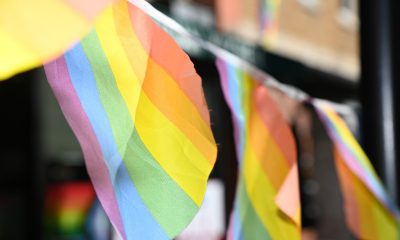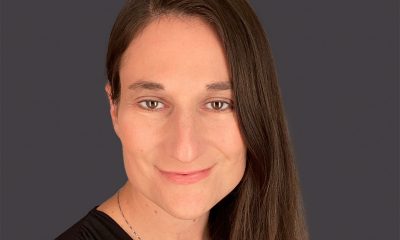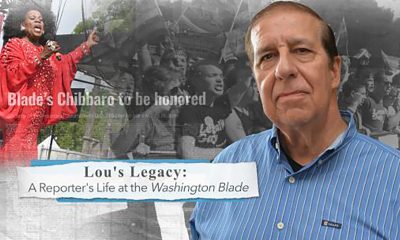Opinions
Equality is a team sport
Athletic careers thrive when we live openly and authentically
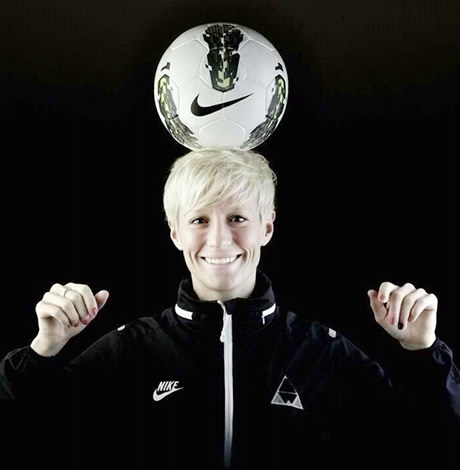

Megan Rapinoe finds inspiration in the small actions taken by individuals and communities that help shape a more inclusive environment across America and beyond.
The past 18 months have truly been groundbreaking in the LGBT sports landscape. The likes of Jason Collins, Michael Sam, Derick Gordon, as well as Olympians Sally J Shipard, Callan Chythlook-Sifsof, Caitlin Cahow and Belle Brockhoff have all come out so loudly and so proudly! And understandably the gut reaction is to fixate on that culminating moment, the proverbial, “I am gay.” Looking back to 2012 and the weeks and months leading up to my coming out, it strikes me as important not to lose sight of the culminating factors that made the decision in that moment even possible.
As an athlete, only about 1 percent of what you do is actually seen: the critical pass, the lifting of the trophy or the ball in the back of the net. What is not seen by the public by and large is the incredible journey that goes along with that incredible moment. I will spare you the cheesy details, but the 90 minutes I am out on the pitch is just the icing on a seven-layer cake. And anyone who has ever been lucky enough to play in a championship match knows that it is about much more than just the game, it is actually about everything that has led you to that moment.
Similarly, while coming out remains an individual act of courage, and although LGBT athletes should be recognized and commended for their leadership, I think that it is important to acknowledge and celebrate what makes coming out moments possible. The LGBT sports movement is about more than LGBT athletes — it’s also about what makes it possible for LGBT athletes to come out and be accepted as part of their teams and sports. It is incredibly inspiring to witness historic moments playing out across the major sports leagues, but I continue to be moved by the small and not-so-small actions taken by individuals and communities, shaping a more inclusive environment across America and beyond.
I came out to contribute to the broader cultural shift that reflects growing support for LGBT equality. We need athletes at all levels to continue to come out — to courageously stand in who they are and show that athletic careers survive and thrive when we live openly and authentically. Both through the U.S. national team and the Seattle Reign I have the opportunity to interact with thousands of fans. People older than I am, younger than I am, men, and women have told me, “You’re the reason I came out,” or, “Seeing you live who you are has given me the strength to be true to myself.” These interactions and conversations have given me tremendous perspective regarding how hard it can be to come out and come to terms with your sexual orientation and or gender identity — and how important it is to have support around you, and in the broader culture.
Back in 2012, I was graciously given the L.A. Gay and Lesbian Center’s Board of Directors Award, for becoming one of the few out Olympians at the 2012 London Games. It was overwhelming and humbling to be surrounded by people who do so much to support the LGBT community, especially the youth, day in and day out. In the domain of LGBT activism and advocacy, while perhaps I have been able to serve as a catalyst for courage, ultimately, change happens when family, friends, and society create inclusive and supportive environments where all people, gay, straight, bisexual and transgender stand together for equality.
As a member of the U.S. women’s soccer team that won gold at the 2012 Olympics, we spoke of our success as a victory made possible not only by the players on and off the pitch, but also our coaches, trainers, U.S. Olympic Committee staff, family members, friends and fans.
Change takes courageous LGBT people, but it also takes a lot of courageous people who are not gay, straight or otherwise. The fact of the matter is that everybody in my life is not gay, and yet everybody in my life has played a role in creating a supportive and inclusive environment for me to simply be who I am.
When athletes come out, we need to be sure that we take the opportunity to recognize, appreciate and sustain the critical, cumulative contributions that lead up to those critical moments. My family, Lori Lindsey, and Dan Levy are just a few of the incredible allies who have journeyed with me and continue to inspire and support my advocacy. I’m an Athlete Ally Ambassador because when it comes to ending LGBT discrimination in and beyond sport, the responsibility for creating inclusive environments does not rest solely with members of the LGBT community. Equality is a team sport.
Megan Rapinoe is guest editor of the Washington Blade. She won a gold medal at the 2012 Olympics as part of the U.S. Women’s Soccer Team and plays for the U.S. National Team as well as the Seattle Reign.
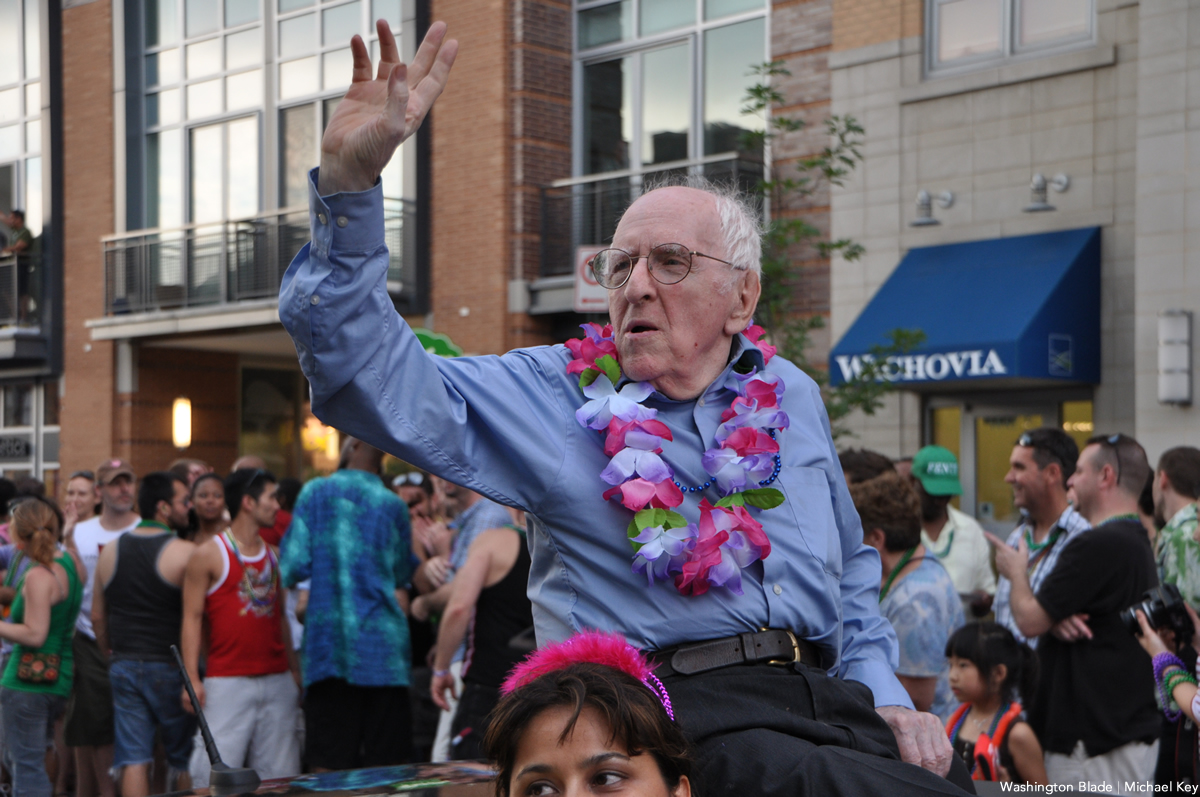
A first generation American from Queens, N.Y., Kameny was a decorated WWII veteran. With a prodigious 148 I.Q., he earned a Ph.D. in astronomy from Harvard University. In 1957 he was recruited by the Army Map Service, a pioneering agency in space exploration.
In 1953 in the wake of McCarthyism, President Eisenhower issued Executive Order 10450 that prohibited homosexuals from military or civilian employment. Having nothing to do with workplace conduct, the Army learned that Kameny might be a homosexual. When confronted, he equivocated and was terminated. Unlike then thousands of other homosexuals terminated from government employment, Kameny fought back.
He took on the military and Civil Service Commission including being the first openly gay man to file an appeal about gay rights to the U.S. Supreme Court. He helped co-found and chair the Mattachine Society of Washington, the first gay rights organization in the nation’s capital.
He wrote letters to, among others, FBI Director J. Edgar Hoover. He founded and chaired the Eastern Conference of Homophile Organization, the nation’s first regional gay organization.
In the 1960s homosexuality, even with a consenting adult in the privacy of one’s bedroom was criminal. The police entrapped and extorted gay men. The American Psychiatric Association classified homosexuality as a mental illness. A bar could lose its license if there was more than one homosexual in their establishment. Homosexuals were considered dangerous, deviant and demented.
Kameny coined the phrase “Gay Is Good.” He organized picketing called Annual Reminders each July 4 from 1965 to 1969 at Independence Hall. The picketers were the first to call for gay equality. The 1965 Annual Reminder had 39 activists making it then the largest demonstration for gay rights. In the mid-1960s the country had an estimated 300 gay and lesbian activists.
He published a newsletter that became the Washington Blade, now the nation’s oldest LGBTQ weekly newspaper. Kameny and Barbara Gittings, the mother of the movement that demonstrated for the right to be heard at the 1971 American Psychiatric Association meeting. Their panel at the 1972 meeting with a masked psychiatrist using a pseudonym and voice modulator was so impactful that the APA created a panel to determine if homosexuality as a mental illness was based on science or discrimination. In 1973, that classification was removed.
He advised gays and lesbians who were the subject of discharge from federal government service. He identified test cases and referred them to the ACLU, Lambda Legal and other counsel. Slowly, but surely those cases began a process for LGBTQ equality.
His efforts led D.C. to be the first city to overturn its sodomy criminal laws. He helped found the first national LGBTQ organization, the North American Conference of Homophile Organizations. His efforts laid the groundwork for HRC and National LGBTQ Task Force.
After Stonewall in June 1969, he chaired a meeting of NY, Philadelphia and D.C. activists that authorized and helped organize to help remember Stonewall the first New York Pride Parade. He believed that Stonewall could be the movement’s Boston Tea Party. He marched in that 1970 parade holding a picket emblazoned with “Gay Is Good.”
He was the first out person to run for Congress as the D.C. delegate. Money left over from his campaign was used to fund the first gay rights television commercial. In July 1975, he was the first to be advised by the Civil Service Commission that it would eliminate homosexuality as a basis for not hiring or for firing a federal civilian employee. In 1977, he attended the White House’s first meeting with gays and lesbians.
Kameny died on Oct. 11, 2011, National Coming Out Day. He lived to see marriage equality approved in several states. He attended the signing by President Obama of the repeal of “Don’t Ask, Don’t Tell,” which enabled gays and lesbians to serve openly in the military. Kameny is buried in the Congressional Cemetery. On his tombstone is inscribed “Gay Is Good.” Over 70,000 of his documents are in the Library of Congress and picket signs from the pioneering demonstrations are housed in the Smithsonian Institution.
On May 21 LGBTQ national organizations gather in front of the Supreme Court. One hundred activists will each hold a candle for his 100th birthday. Fifteen national leaders will engage in picketing similar to the 1965 picketing at the White House and Independence Hall. They will honor Frank Kameny; celebrate the 10th anniversary of marriage equality (Obergefell v Hodges, 2015); and push back on those who would attempt to render us invisible, deny our history and undermine our equality. We will remember the nation’s loss when it fired a Harvard Ph.D. in astronomy because of his status as a homosexual. History repeats itself. This month the U.S. Supreme Court allowed the federal government to terminate transgender servicemembers solely because of their sexual orientation. How far we have come. How much farther we have to travel.
Malcolm Lazin is the national chair, Kameny 100. He is the executive director, LGBT History Month and executive producer of three LGBTQ documentaries including Gay Pioneers. He was an adjunct professor of LGBT History and Rights at New College of Florida. www.kameny100.org.
Opinions
Returning to Alcatraz: Memory through a queer lens
Trump would like to ‘rebuilt and reopen’ notorious island prison
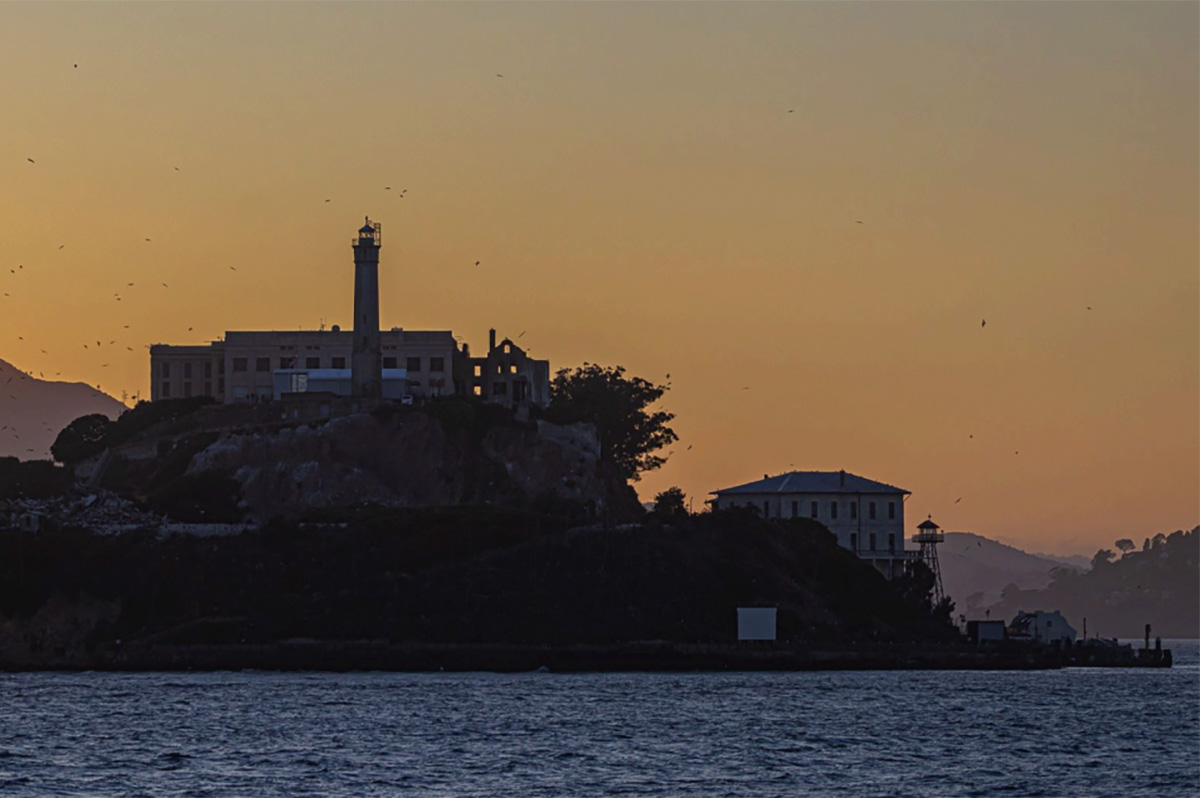
When I arrived at Alcatraz Island, what I felt wasn’t curiosity — it was discomfort. Standing before such a photogenic landscape, something felt off. As if the place was trying to erase what it truly was: a mechanism of punishment, a machine built to control and define who should be excluded. I couldn’t walk those corridors without thinking about what this place represents for so many of us: a symbol of how the state has decided, time and again, that some lives matter less.
As a queer person, what struck me wasn’t just the past Alcatraz holds — but how that past is still alive in today’s policies. As I looked into the empty cells, I thought about the many LGBTQIA+ people who have been punished simply for existing. People like Frank Lucas Bolt, the first prisoner of Alcatraz — not convicted for violence, but for “sodomy,” a label the legal system used to persecute gay men.
He was not the only one. For decades, being gay or trans was enough to end up in a federal prison or a psychiatric hospital. Not for a crime, but for defying the norm. The legal and medical systems worked hand in hand to suppress any deviation from prescribed gender and sexuality. In prisons, queer people were subjected to physical punishment, solitary confinement, and even conversion therapy. Alcatraz was not an exception — it was one of the system’s most brutal epicenters.
But the queer memory of this place isn’t found in tourist brochures. To uncover it, you have to read between the lines, search through archives that are never taught in schools, and listen to those who still carry the scars. Walking among those walls, I realized that remembering isn’t enough — we have to contest the meaning of memory itself. What isn’t told, is repeated.
That’s why, when a few weeks ago President Trump said he’d like to “rebuild and reopen Alcatraz,” I didn’t take it as just another symbolic gesture. I took it as a warning. In times of crisis, punishment becomes an easy offer: lock them up, expel them, make them disappear. And in that narrative, queer, migrant, and racialized bodies are always the first to be targeted.
The danger isn’t just in the idea of a reopened prison, but in what it represents: The longing to return to a social order that was already deeply unjust. The nostalgia for “tough-on-crime” prisons is the same one that criminalizes unhoused people, persecutes migrants, and stigmatizes queer and trans youth in public spaces. Anyone who dreams of locking up more people isn’t thinking about justice — they’re thinking about control.
In 1969, a group of Native American activists occupied Alcatraz for over a year. They did it to denounce land theft and the government’s betrayal of treaties. During their occupation, they painted a message on the island’s water tower: “Peace and Freedom. Home of the Free Indian Land.” That gesture was a radical reclamation of space, a way of saying: this island can also be a place of resistance.
Alcatraz holds many layers. It was a high-security prison, yes, but it also became the stage for one of the most powerful acts of civil disobedience in the 20th century. That tension still lingers. The question is not just what happened at Alcatraz, but what we want it to represent today. A renewed model of punishment — or a site of memory that helps us prevent more harm?
As I walked its halls, I couldn’t stop thinking about the migrant detention centers that are still full today. About trans people held in inhumane conditions. About arbitrary detentions. About those of us who, like me, crossed borders just to survive. The distance between that Alcatraz and our present is not as wide as we’d like to believe. The walls may change, but punishment still operates on the same bodies.
Standing before the empty cells, I felt what many must have felt there: the weight of abandonment, the state’s mark upon their body, the feeling that their existence was a problem. But I also felt something else: conviction. The certainty that we will no longer walk into those spaces in silence. That we will not let ourselves be labeled as “mistakes” or “deviants.” That if they try to lock us up again, they will find us organized, with memory, with dignity.
Alcatraz does not need to be rebuilt. It needs to be understood. And we — queer, racialized, migrant communities — need to transform that understanding into action: to push back against hateful rhetoric, to protect those still living under threat, and to tell our full stories. Let no one be punished again for being who they are. Let history not become a locked cell once more.
The views expressed in this article are solely my own and do not necessarily reflect those of my employer, colleagues, or any affiliated organization. They are shared from a personal perspective shaped by lived experience and advocacy work.
Lately I’ve sensed a deep seated antipathy in the queer population toward fixing systemic issues that sabotage the wellbeing of the queer population. Much of this antipathy is centered around race: wealthy cisgender (and mostly white) gay men feel that much of their needs are taken care of, with the exception of the Trump administration potentially taking away their right to marry. Then, all of a sudden, when reports come out that gay marriage is in jeopardy, these wealthy gay men rally around the flag and start to care. But for the most part, they are busy with their well-off lives renting penthouses in Logan Circle or Dupont, going to mostly all-white gay toga parties, finding casual hookups on Grindr. Their lives are not entirely full of discrimination. They work in offices that celebrate, or at least tolerate, their identity. Because to these office places, a capable, well-dressed, cisgender gay man who knows his business field and can present tidily well is no threat to their corporate good or corporate advance.
White cis gay men who come from lower socioeconomic backgrounds face a larger struggle: They might not be able to afford the wardrobe that fits an elite corporate culture; some middle or lower class folks can’t fit this mold. Moreover, they might not harbor the educational background to fit such job titles at Goldman Sachs, after all, Goldman is looking for Harvard MBAs. Indeed, they are looking for top-tier MBAs — a credential that very few queer people live up to. With poverty and lower socioeconomic class pervading the queer community, it’s hard to find gay or lesbian or — god forbid — trans folk who fit McKinsey’s mold and ethos of work.
Queer people who don’t acquiesce to corporate culture — people who don’t have Ivy League degrees or the best MBA grads from Wharton or Yale or Harvard tend to apply to other jobs. At the lower end of the ladder, queer people who don’t strive to be top tier consultants work barista jobs or retail. I mention “lower end of the ladder” not to deride queer people who choose to be baristas or work in retail — it is their choice, and amazing pro-BLM and pro-Palestine and pro-working class movements originate from these kinds of work places.
Yet other queer people settle for middle class jobs. Trans men who pass extraordinarily well as men become Realtors or insurance agents. Some even more become entertainers and singers and DJs; there are ample jobs available for trans people. Some drag queens or trans women like Laverne Cox shine bright on the national stage and become actresses that represent gender diverse women. And that is good for them.
What I’ve found though is much antipathy toward our job struggle. Not necessarily antipathy from the queer population itself, but antipathy from employers who are hesitant to hire a trans man or a trans man who doesn’t pass well. Trans men who don’t pass are an enormous issue to employers. Employers just don’t like non-passing trans people. They pose a liability to them. They make companies feel uncomfortable. It’s going to take years–if not decades–for companies to just “chill” about gender nonconformance. Trans people harbor many excellent minds, be it in mathematics, physics, English, computer science, or the arts.
It’s time that corporate America take a serious look at their queer workforce. Firing or denying someone employment because they don’t fit a certain gender mold is a cruel act. And this cruel act has gone on for far too long. There are some tales of getting it better. Most notably tech companies like Google or Amazon hiring gender nonconforming computer engineers to get the job done. They enforce an environment of respect and mutual aid. This trend needs to continue and grow.
If it doesn’t then the trans workforce is left feeling bereft, lost in translation. This can’t continue forever. It’s time for change.
Isaac Amend is a writer based in the D.C. area. He is a transgender man and was featured in National Geographic’s ‘Gender Revolution’ documentary. He serves on the board of the LGBT Democrats of Virginia. Contact him at [email protected] or on Instagram at @literatipapi



